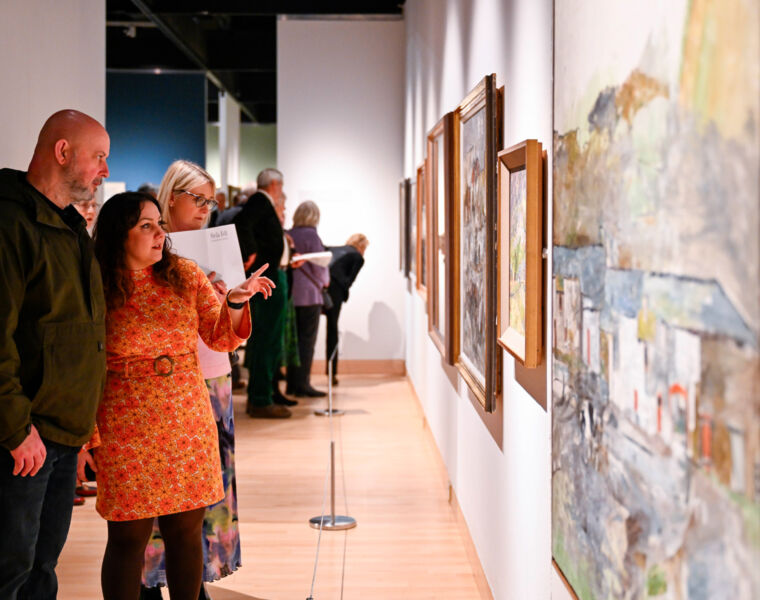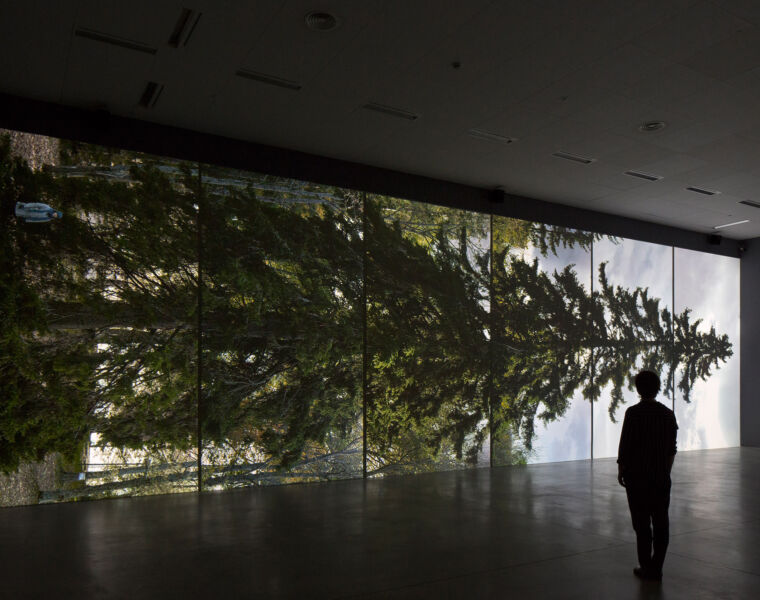
Tate St Ives unveiled Adam Khan Architects’ first-stage designs for the transformation of the Palais de Danse today.
This historic Grade II-listed building in the heart of St Ives was once a cinema and a dance hall before Barbara Hepworth purchased it in the 1960s as her second studio.
It will now be restored and reactivated as a place for art-making, performances, and events, as well as offering fascinating new insights into one of Britain’s greatest modern artists.
Anne Barlow, Director of Tate St Ives, said, “The Palais de Danse played an important role in Hepworth’s international artistic career as well as in the local history of the St Ives community. In bringing it back to life, we want to honour that rich history and realise its immense potential for local residents, visitors, and a new generation of artists.”
 Archival film of Barbara Hepworth in the restored dance hall of the Palais de Danse. ©Adam Kahn Architects.
Archival film of Barbara Hepworth in the restored dance hall of the Palais de Danse. ©Adam Kahn Architects.
Adam Khan said, “The transformed Palais de Danse will offer a new typology—an overlapping mix of working studio, sculpture gallery, and performance space—inspired by Hepworth’s own experimental practice on this site. We are privileged to preserve and add to those layers of history that this very special building has accumulated over the past century.”
The project draws inspiration from the site’s long history of adaptive reuse and prioritises sustainability and community.
Environmental technologies will be sensitively embedded into the fabric of this heritage building while preserving the unique character of the spaces and using locally sourced products and materials.
 Visitors exploring the lower workshop, artefacts and process model of Four-Square Walkthrough sculpture in the Palais de Danse.© Adam Kahn Architects.
Visitors exploring the lower workshop, artefacts and process model of Four-Square Walkthrough sculpture in the Palais de Danse.© Adam Kahn Architects.
New visitor facilities will make the Palais publicly accessible for the first time in over half a century, enabling it to support contemporary artistic practices and active community engagement and safeguarding this important building for future generations.
On the lower floor, Hepworth’s workshops will become spaces to learn about her life and art. The grid-marked floor, which still bears the outline of Single Form – the monumental sculpture she created for the United Nations HQ in New York – will be carefully preserved, while never-before-seen artefacts, objects and tools from her time at the Palais will be displayed in a recreation of her working studio.
 Barbara Hepworth working in the Palais de Danse on the prototype for Single Form for the United Nations, January 1961. Photograph by Studio St Ives ©Bowness.
Barbara Hepworth working in the Palais de Danse on the prototype for Single Form for the United Nations, January 1961. Photograph by Studio St Ives ©Bowness.
The upper floor will contain the spectacular newly restored dance hall, with its 24-metre sprung maple floor, stage, and recreated glassine screens designed by Hepworth herself.
The hall will be used for new artistic commissions, installations and performances, as well as hosting community events and talks. A new lift and staircase will make the whole building accessible to all, including the balcony overlooking the hall and the projection room where as-found 1930s graffiti can still be seen.
Outside the Palais is a yard where Hepworth made larger prototypes of her sculptures and engaged the St Ives community to help transport the finished pieces to their final destinations.
 Workshop taking place in the new creative studio and yard of the Palais de Danse. ©Adam Kahn Architects.
Workshop taking place in the new creative studio and yard of the Palais de Danse. ©Adam Kahn Architects.
This will now be opened to the public for the first time, alongside a creative studio to support a new programme of hands-on making activities and sculpture workshops for visitors of all ages.
It will also become the new home for Tate St Ives’s long-running programme of artist residencies, supported by a small studio above, to provide new opportunities for international artists and to bring contemporary perspectives to Hepworth’s legacy.
Lead image: Proposed design of the window display and main entrance to the Palais de Danse. ©Adam Kahn Architects.
![]()




You must be logged in to post a comment.